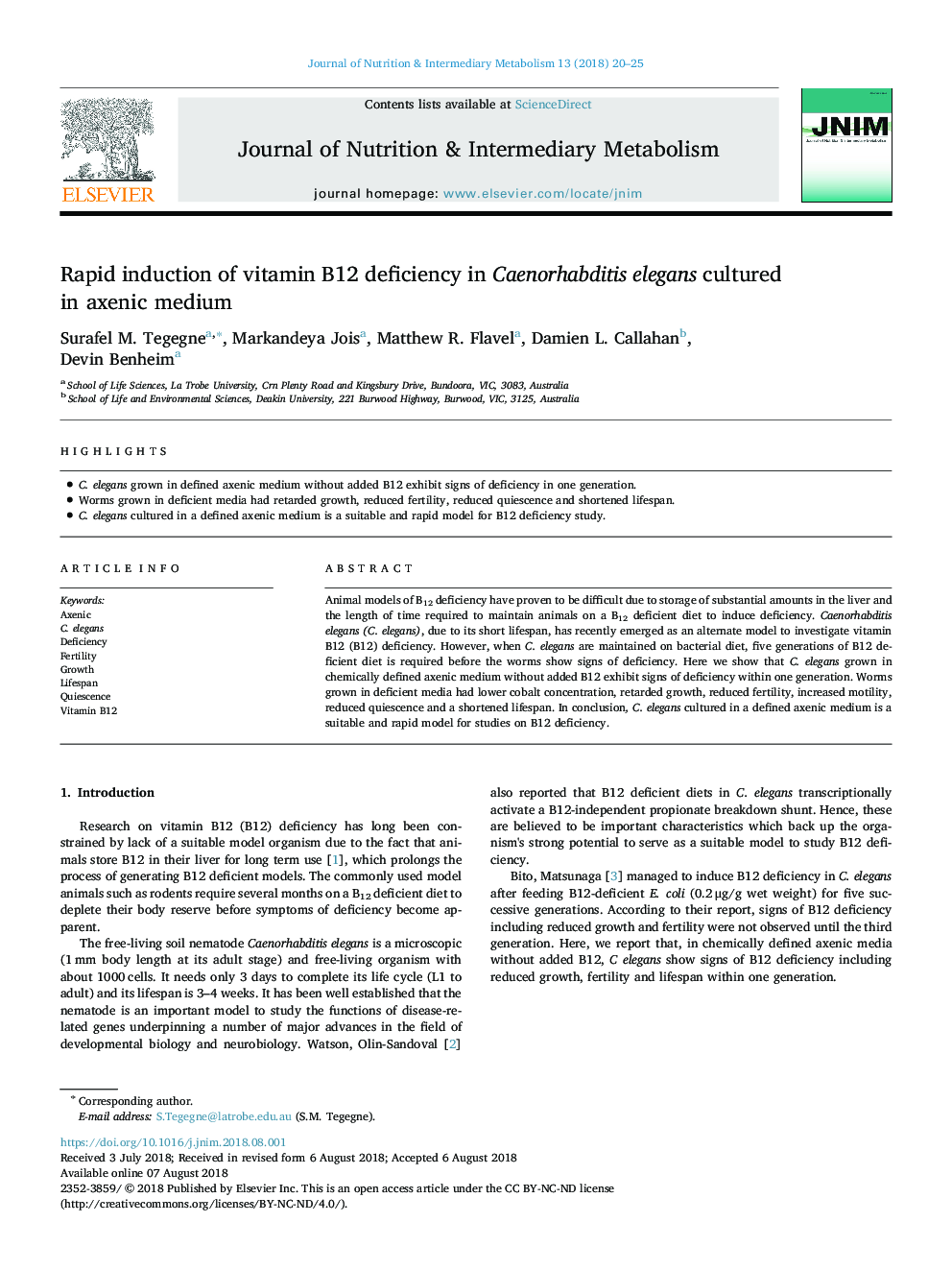| Article ID | Journal | Published Year | Pages | File Type |
|---|---|---|---|---|
| 8589125 | Journal of Nutrition & Intermediary Metabolism | 2018 | 6 Pages |
Abstract
Animal models of B12 deficiency have proven to be difficult due to storage of substantial amounts in the liver and the length of time required to maintain animals on a B12 deficient diet to induce deficiency. Caenorhabditis elegans (C. elegans), due to its short lifespan, has recently emerged as an alternate model to investigate vitamin B12 (B12) deficiency. However, when C. elegans are maintained on bacterial diet, five generations of B12 deficient diet is required before the worms show signs of deficiency. Here we show that C. elegans grown in chemically defined axenic medium without added B12 exhibit signs of deficiency within one generation. Worms grown in deficient media had lower cobalt concentration, retarded growth, reduced fertility, increased motility, reduced quiescence and a shortened lifespan. In conclusion, C. elegans cultured in a defined axenic medium is a suitable and rapid model for studies on B12 deficiency.
Related Topics
Life Sciences
Biochemistry, Genetics and Molecular Biology
Endocrinology
Authors
Surafel M. Tegegne, Markandeya Jois, Matthew R. Flavel, Damien L. Callahan, Devin Benheim,
